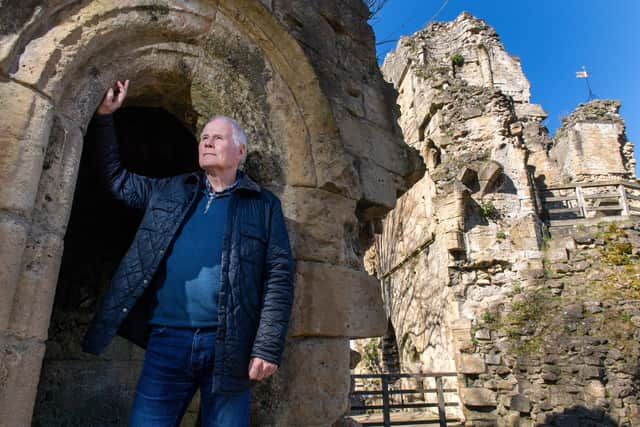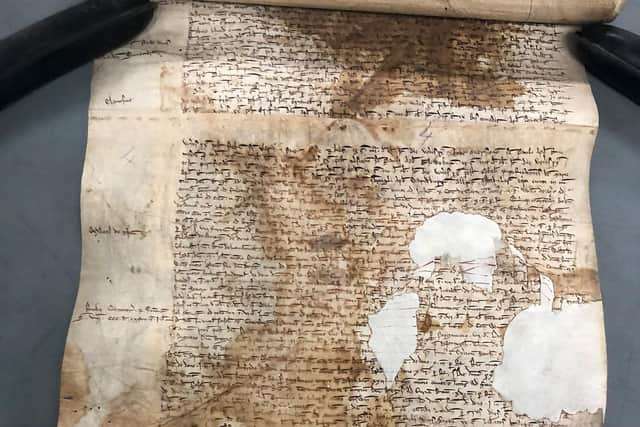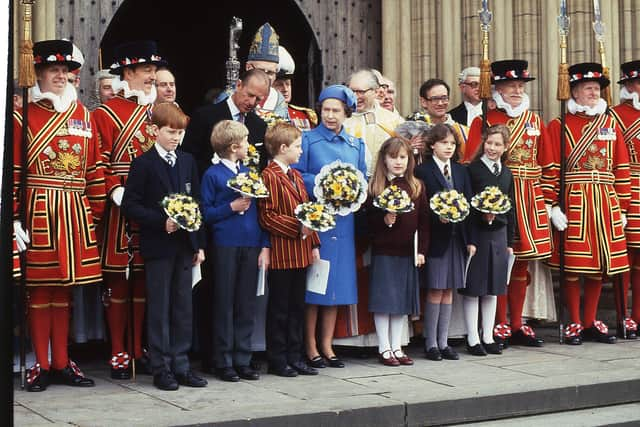How the ancient Royal Maundy tradition may have come from Yorkshire centuries ago
King Charles himself is to attend York Minster today for his first official Maundy service, and with it come renewed calls for Knaresborough’s historic role to be recognised.
According to former teachers and historians’ research, records can be traced back to Holy Week in the year 1210 outlining King John’s expenses the giving of alms from the town.
Advertisement
Hide AdAdvertisement
Hide AdBernard Higgins, a retired teacher and avid campaigner, has written to Buckingham Palace in the hope that one day there can be some formal recognition.


“I would like King Charles and Camilla to come and visit, to acknowledge and celebrate what King John established 800 years ago,” he said. “No monarch has done since then.”
King Charles and the Queen Consort Camilla are to host their first Royal Maundy Service today at York Minster.
Some 74 men and 74 women, signifying the age of the monarch and selected from dioceses across the country, will receive the Maundy as a gift from the King to thank them for their service and for making a difference to the lives of people in their local communities.
Advertisement
Hide AdAdvertisement
Hide AdThe late Queen distributed the Royal Maundy at York Minster on two occasions: first on March 30, 1972 and again on April 5, 2012, during her Diamond Jubilee Year.


In Knaresborough it was the late Mayor Arnold Kellett, a renowned Yorkshire dialect expert and author who died in 2009, who first started the research.
A well known historian and former teacher, he is said to have even discussed it with the Queen on her visit to Ripon Cathedral for Maundy Services in 1985.
Mr Kellet had argued the case that Maundy owed its early development, and perhaps even its origins, to the “least humble of monarchs” King John.
Advertisement
Hide AdAdvertisement
Hide AdAccording to the Royal Almonry’s records the first known Maundy was said to be at Rochester in 1215.


King John’s expenses, however, are recorded in an historic document ‘Rotolus Misea’ at the National Archives in Kew, which detail him giving alms to the poor on the Thursday before Easter some five years before.
Mr Higgins, who had invited the Queen just before Covid, has received a response from the King’s diary secretary to say she has passed the exchange to the King’s Lord High Almoner for careful consideration for the future.
“The first recorded Royal Maundy took place in 1210, when King John was in residence at Knaresborough Castle,” said Mr Higgins.
Advertisement
Hide AdAdvertisement
Hide Ad“He visited to hunt, and enjoy himself, but also to collect taxes. He was also trying to keep an eye on the bandits that roamed the North of England.
“King John was trying to get back in the Pope’s good books. He equipped 13 of the poorest men in the town with food, clothes and money. Each day that expense is recorded.”